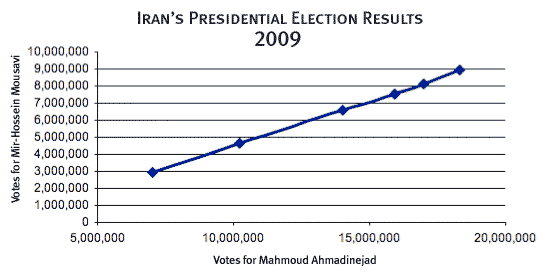Despite considerable progress, it remains an open problem.
Motivated by this issue, we address the more general question of equilibration. We prove, with virtually full generality, that reaching equilibrium is a universal property of quantum systems: almost any subsystem in interaction with a large enough bath will reach an equilibrium state and remain close to it for almost all times. We also prove several general results about other aspects of thermalization besides equilibration, for example, that the equilibrium state does not depend on the detailed microstate of the bath.I try to post some interesting "any stuff" which I call "etc..." and QUITE SIMPLE physics
Tuesday, June 30, 2009
Quantum mechanical evolution towards thermal equilibrium
How to Avoid Yourself

Every Sunday morning you go for a walk in the city, heading nowhere in particular, with just one rule to your rambling: You never retrace your steps or cross your own path. If you have already walked along a certain block or passed through an intersection, you refuse to set foot there again.
This recipe for tracing a loopless path through a grid of city streets leads into some surprisingly dark back alleys of mathematics—not to mention byways of physics, chemistry, computer science and biology. Avoiding yourself, it turns out, is a hard problem. The exact analysis of self-avoiding walks has stumped mathematicians for half a century; even counting the walks is a challenge.
My own initiation into the trials of self-avoidance came when I began experimenting with a simple model of the folding of protein molecules, a story I told in an earlier "Computing Science" column (see Hayes 1998). Protein folding is close to the historical roots of the self-avoiding walk, which was first conceived as a tool for understanding the geometry of long-chain polymer molecules. A polymer writhing and wriggling in solution forms a random tangle—random, that is, except that no two atoms can occupy the same position at the same time. This "excluded volume effect" in the polymer is modeled by the walk's insistence on avoiding itself.
Friday, June 26, 2009
Swimming in the Fermi sea

When one “immerses” a particle in a quantum many-body system, for instance an electron in a solid, the particle “swims” shrouded by a cloud of excitations of its new environment. This composite object is called a quasiparticle and possesses the same features as the initial particle, but with modified physical properties ( mass, charge, etc... ).
As with other many-body phenomena, the ab initio calculation of quasiparticle properties is highly challenging, and in most cases it can only be treated approximately. To overcome this challenge, use of the versatility of laser-cooled gases to simulate many-body condensed matter systems has recently been proposed.
Writing in Physical Review Letters, André Schirotzek, Cheng-Hsun Wu, Ariel Sommer, and Martin Zwierlein from MIT in the US present a dramatic demonstration of this scheme by studying experimentally the behavior of an atomic impurity immersed in a Fermi sea of ultracold atoms: A very simple system that constitutes the epitome of quasiparticle physics.
Thursday, June 25, 2009
Steven Weinberg: From BCS to the LHC




Tuesday, June 23, 2009
Ayuda de Webmasters
W3C: Web Storage
HTML 5

text/html ) variant known as HTML 5 and an XHTML variant known as XHTML 5. This is the first time that HTML and XHTML have been developed in parallel.
Let's make the web faster

Sunday, June 21, 2009
Fuzzy Math

Guilt by Calculation

Wednesday, June 17, 2009
AWT and mechanical models of entanglement

Evidence found of lake, catastrophic flood on Mars

Monday, June 15, 2009
Tunable few-electron double quantum dots and Klein tunnelling in ultraclean carbon nanotubes
Thursday, June 4, 2009
Single-electron transistors
While the electronics industry wonders what will happen when transistors become so small that quantum effects become important, researchers are building new transistors that actively exploit the quantum properties of electrons. Michel Devoret and Christian Glattli report.
THE INVENTION of the transistor by John Bardeen and William Shockley in 1948 triggered a new era in electronics. Originally designed simply to emulate the vacuum tube, scientists soon found that this solid-state device could offer much more. The great potential of the transistor for speed, miniaturization and reliability has been fully exploited since well controlled materials such as pure single-crystal silicon became available. According to the latest "road-map" for the microelectronics industry, microchips containing one billion transistors and operating with a clock cycle of a billionth of a second will be on the market just a few years into the new millennium...
Wednesday, June 3, 2009
Time Travel Beats Quantum Mechanics

Miles V. Klein: Shining light on iron pnictides with Raman scattering


Tuesday, June 2, 2009
Dambisa Moyo

...This book ( How the West Was Lost
, scheduled for publication with Penguin and Farrar, Straus & Giroux in 2010 ) examines the policy errors made in the US and other Western economies which culminated in the 2008 financial crisis. And discusses why financial and economic experts missed the signs of the credit crunch. It also explores the policy decisions that have placed the emerging world- China, Russia and the Middle East, in pole position to become the dominant economic players in the 21st century.
Felix Ritort: Fluctuations in open systems

Monday, June 1, 2009
The World Digital Library (WDL)

Promote international and intercultural understanding;
Expand the volume and variety of cultural content on the Internet;
Provide resources for educators, scholars, and general audiences;
Build capacity in partner institutions to narrow the digital divide within and between countries.







